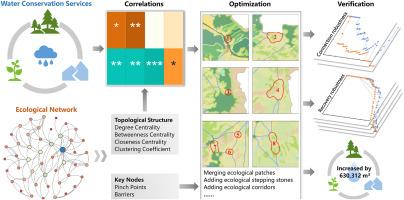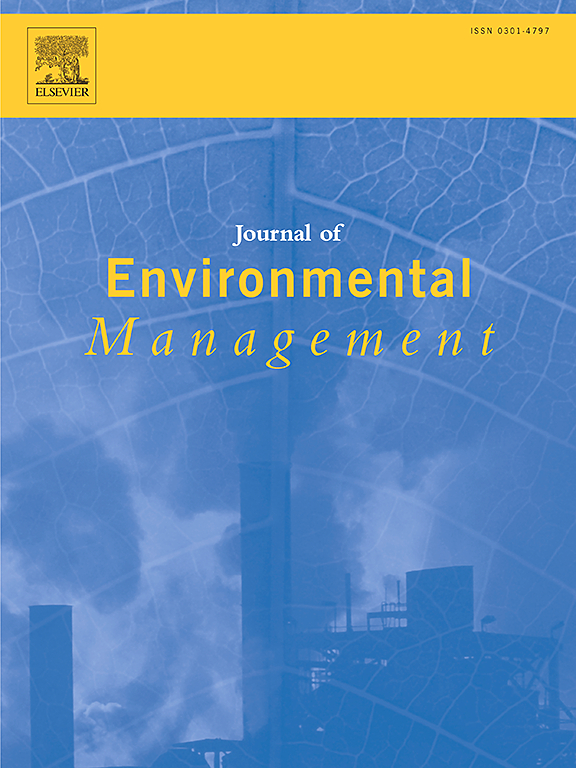Optimization of ecological network to improve water conservation services in the Nianchu River Basin
IF 8
2区 环境科学与生态学
Q1 ENVIRONMENTAL SCIENCES
引用次数: 0
Abstract
Against the backdrop of water resource depletion in the Qinghai-Tibet Plateau, water conservation services (WCS) have emerged as critical ecosystem services warranting attention. Adjusting the ecological network (EN) structure and optimizing topological relationships among landscape elements are instrumental in facilitating ecological processes, constituting an effective approach for enhancing WCS. We employed the Integrated Valuation of Ecosystem Services and Tradeoffs model to simulate the WCS value in the Nianchu River Basin and used the Minimum Cumulative Resistance model in combination with the Linkage Mapper to construct an EN. Through topological analysis based on complex network theory, we examined the EN topology and identified ecological pinch points and barriers by applying circuit theory. According to the correlation between EN topology and WCS, and taking into account local vegetation restoration potential, we ultimately optimized the EN to enhance the WCS value. The results revealed a positive correlation between the WCS value and betweenness centrality (r = 0.86, p < 0.01) of forest patches, as well as with the clustering coefficient of grassland patches (r = 0.44, p < 0.05). Following the optimization of key areas with restoration potential, we enhanced the EN structure by adding six new patches, eliminating four redundant corridors, and establishing 11 new corridors. The optimized EN demonstrated enhanced stability in robustness tests, indicated by a reduced slope of edge recovery against malicious attacks (from −0.0224 to −0.0199) and an increase in the WCS value of 630,311.6 m³. This study highlights the importance of landscape spatial structure in enhancing ecosystem services, providing valuable insights for sustainable water resource management in the ecologically sensitive regions of the Qinghai-Tibet Plateau.

优化生态网络,改善年楚河流域的水利服务。
在青藏高原水资源枯竭的背景下,水源涵养服务(WCS)已成为值得关注的重要生态系统服务。调整生态网络(EN)结构和优化景观要素之间的拓扑关系有助于促进生态过程,是提高 WCS 的有效方法。我们采用生态系统服务综合估值与权衡模型模拟了年楚河流域的 WCS 价值,并利用最小累积阻力模型结合联系映射器构建了生态网络。通过基于复杂网络理论的拓扑分析,我们研究了EN的拓扑结构,并运用电路理论确定了生态夹点和障碍。根据 EN 拓扑与 WCS 的相关性,并考虑到当地植被恢复的潜力,我们最终优化了 EN,以提高 WCS 值。结果显示,WCS 值与中心度之间存在正相关关系(r = 0.86,p
本文章由计算机程序翻译,如有差异,请以英文原文为准。
求助全文
约1分钟内获得全文
求助全文
来源期刊

Journal of Environmental Management
环境科学-环境科学
CiteScore
13.70
自引率
5.70%
发文量
2477
审稿时长
84 days
期刊介绍:
The Journal of Environmental Management is a journal for the publication of peer reviewed, original research for all aspects of management and the managed use of the environment, both natural and man-made.Critical review articles are also welcome; submission of these is strongly encouraged.
 求助内容:
求助内容: 应助结果提醒方式:
应助结果提醒方式:


